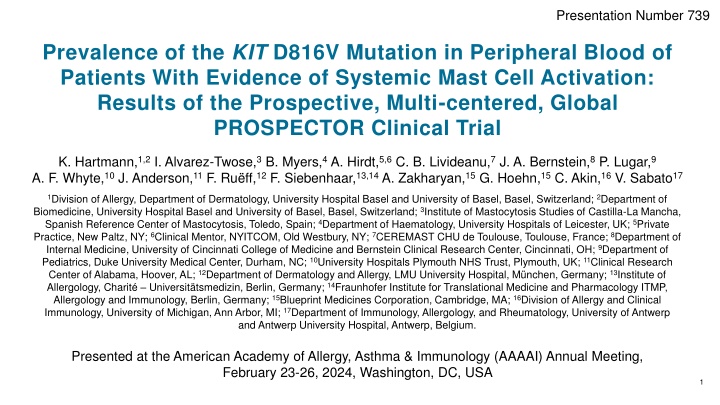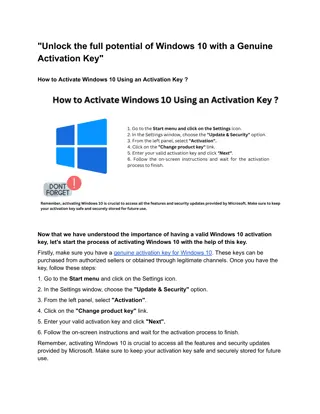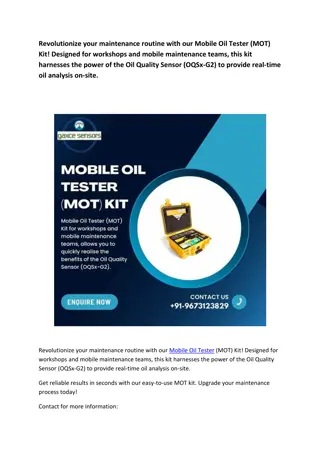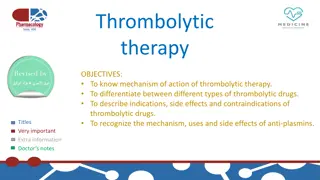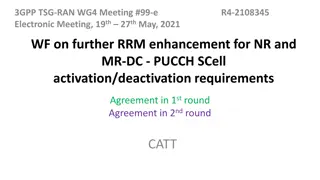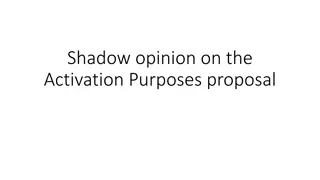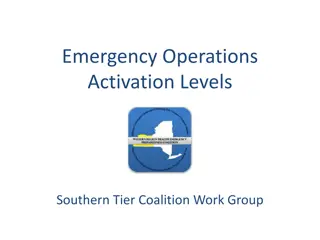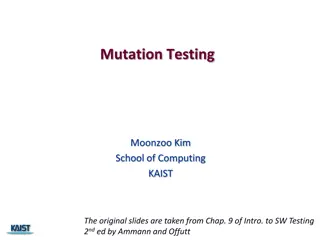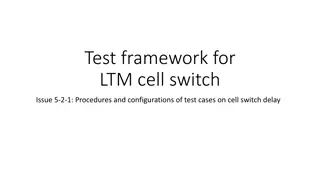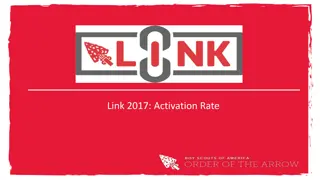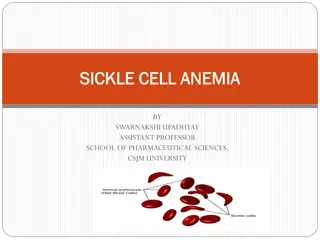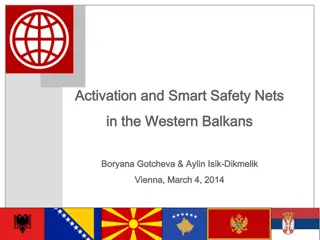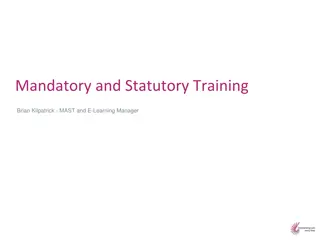Prevalence of KIT D816V Mutation in Patients with Systemic Mast Cell Activation
This study presents findings from the PROSPECTOR clinical trial on the prevalence of the KIT D816V mutation in the peripheral blood of patients with systemic mast cell activation. The study involves multiple centers globally and sheds light on the significance of this mutation in systemic mastocytosis cases. Various researchers and institutions contributed to this research, highlighting the importance of early suspicion and diagnosis in cases of systemic mast cell activation.
Download Presentation

Please find below an Image/Link to download the presentation.
The content on the website is provided AS IS for your information and personal use only. It may not be sold, licensed, or shared on other websites without obtaining consent from the author.If you encounter any issues during the download, it is possible that the publisher has removed the file from their server.
You are allowed to download the files provided on this website for personal or commercial use, subject to the condition that they are used lawfully. All files are the property of their respective owners.
The content on the website is provided AS IS for your information and personal use only. It may not be sold, licensed, or shared on other websites without obtaining consent from the author.
E N D
Presentation Transcript
Presentation Number 739 Prevalence of the KIT D816V Mutation in Peripheral Blood of Patients With Evidence of Systemic Mast Cell Activation: Results of the Prospective, Multi-centered, Global PROSPECTOR Clinical Trial K. Hartmann,1,2 I. Alvarez-Twose,3 B. Myers,4 A. Hirdt,5,6 C. B. Livideanu,7 J. A. Bernstein,8 P. Lugar,9 A. F. Whyte,10 J. Anderson,11 F. Ru ff,12 F. Siebenhaar,13,14 A. Zakharyan,15 G. Hoehn,15 C. Akin,16 V. Sabato17 1Division of Allergy, Department of Dermatology, University Hospital Basel and University of Basel, Basel, Switzerland; 2Department of Biomedicine, University Hospital Basel and University of Basel, Basel, Switzerland; 3Institute of Mastocytosis Studies of Castilla-La Mancha, Spanish Reference Center of Mastocytosis, Toledo, Spain; 4Department of Haematology, University Hospitals of Leicester, UK; 5Private Practice, New Paltz, NY; 6Clinical Mentor, NYITCOM, Old Westbury, NY; 7CEREMAST CHU de Toulouse, Toulouse, France; 8Department of Internal Medicine, University of Cincinnati College of Medicine and Bernstein Clinical Research Center, Cincinnati, OH; 9Department of Pediatrics, Duke University Medical Center, Durham, NC; 10University Hospitals Plymouth NHS Trust, Plymouth, UK; 11Clinical Research Center of Alabama, Hoover, AL; 12Department of Dermatology and Allergy, LMU University Hospital, M nchen, Germany; 13Institute of Allergology, Charit Universit tsmedizin, Berlin, Germany; 14Fraunhofer Institute for Translational Medicine and Pharmacology ITMP, Allergology and Immunology, Berlin, Germany; 15Blueprint Medicines Corporation, Cambridge, MA; 16Division of Allergy and Clinical Immunology, University of Michigan, Ann Arbor, MI; 17Department of Immunology, Allergology, and Rheumatology, University of Antwerp and Antwerp University Hospital, Antwerp, Belgium. Presented at the American Academy of Allergy, Asthma & Immunology (AAAAI) Annual Meeting, February 23-26, 2024, Washington, DC, USA 1
Disclosures Dr Hartmann is a consultant for and has received travel support from ALK-Abell , Allergopharma, Blueprint Medicines Corporation, Cogent, KalVista, Leo, Menarini, Novartis, Pfizer, Sanofi, Takeda, and Thermo Fisher, and has received research funding from Thermo Fisher Scientific. Dr Alvarez-Twose is a consultant/speaker for and has received honoraria from Blueprint Medicines Corporation and Novartis. Dr Myers has no conflict of interests to disclose. Dr Hirdt has no conflict of interests to disclose. Dr Livideanu has no conflict of interests to disclose. Dr Bernstein has no conflict of interests to disclose. Dr Lugar is a speaker for Blueprint Medicines Corporation and an advisor for Cogent. Dr Whyte has no conflict of interests to disclose. Dr Anderson has no conflict of interests to disclose. Dr Ru ff has received personal fees for lectures from ALK- Abell , Blueprint Medicines, Boehringer Ingelheim, Novartis, Thermo Fisher Scientific, and UCB. Dr Siebenhaar is a speaker, advisor, and has received research funding from Allakos, Blueprint Medicines Corporation, Celldex, Cogent, Escient, Granular, GSK, InveaTx, Moxie, Noucor, Novartis, Sanofi/Regeneron, and ThirdHarmonicBio. Dr Zakharyan is a current employee of Blueprint Medicines Corporation. Dr Hoehn is a current employee of Blueprint Medicines Corporation. Dr Akin is a consultant for Blueprint Medicines Corporation, Cogent, and Novartis and has received research funding from Blueprint Medicines Corporation and Cogent. Dr Sabato is a consultant for and has received honoraria from Blueprint Medicines Corporation, Cogent, and Novartis. 2
Background Systemic mast cell activation (MCA) involves 2 organ systems; classified as clonal or non-clonal based on KIT D816V mutation status1 3 Systemic mastocytosis (SM) is a clonal mast cell disease driven by KIT D816V in ~95% of cases4,5 Hallmark symptoms that should lead to increased suspicion include: cutaneous mastocytosis; anaphylaxis with hypotension/syncope; and either of these with the involvement of another organ system, including GI SM in some cases is associated with hereditary alpha-tryptasemia (HaT): increased TPSAB1 gene copy number and increased serum tryptase levels that can potentially worsen the severity of mast cell activation conditions The prevalence of KIT D816V-driven clonal mast cells and mast cell disease (SM) in patients with systemic mast cell activation symptoms is not known PROSPECTOR is the first prospective, multicenter screening study evaluating the prevalence of peripheral blood KIT D816V mutation and HaT in patients with evidence of systemic MCA GI, gastrointestinal; HaT, hereditary alpha-tryptasemia; MCA, mast cell activation; SM, systemic mastocytosis; TPSAB1, tryptase Alpha/Beta 1. 1. Jackson CW et al. Int J Mol Sci. 2021;22(20); 2. Gonz lez-de-Olano D et al. Front Immunol. 2017;8:792; 3. Akin C et al. J Allergy Clin Immunol. 2017;140:349 355; 4. Garcia-Montero AC et al. Blood. 2006;108:2366 2372; 5. Kristensen T et al. J Mol Diagn. 2011;13:180 188. 3
Systemic MCA involves 2 organ systems; classified as clonal or non-clonal based in part on KIT D816V mutation status MCAS Activation leads to degranulation and secretion of vasoactive and pro-inflammatory mediators1 Mast cell activators Allergens, bacteria, cytokines, drugs, fungi, peptides, toxins, and viruses1 Non-Clonal MCs KIT D816V- Clonal MCs KIT D816V+ SM pathogenesis1-3 Prostaglandins Tryptase Idiopathic Secondary Primary Leukotrienes Histamine SM More common KIT D816V mutant gene Heparin CM MMAS Less common Cytokines Carboxypeptidase Chymase CM, cutaneous mastocytosis; MC, mast cell; MCA, mast cell activation; MCAS, mast cell activation syndromes; MMAS, monoclonal MCAS; SM, systemic mastocytosis. 1. Theoharides TC et al. N Engl J Med. 2015;373(2):163-172; 2. Pardanani A. Am J Hematol. 2023;98(7):1097-1116; 3. Metcalfe DD et al. Chapter 1. Overview of mast cells in human biology. In Akin C, ed. Mastocytosis: A Comprehensive Guide. Cham, Switzerland: Springer Nature; 2020. 4
Hallmark symptoms may warrant investigation of systemic mastocytosis Anaphylaxis Skin Gastrointestinal Anaphylaxis with hypotension and syncope can occur1 Maculopapular lesions with Darier s sign is a highly specific diagnostic feature2 Many patients report nausea, vomiting and/or diarrhea1,4 50% of adult patients with SM experience recurrent or unexplained anaphylaxis2,3 Symptoms can be unpredictable and severe1,4 Wheal-and-flare reaction is elicited by stroking lesion with a tongue spatula2,a Per WHO guidelines, it is recommended to test for serum tryptase and KIT D816V at the first sign of the disease5 SM, systemic mastocytosis; WHO, World Heath Organization. 1. Hartmann K, Escribano L, Grattan C, et al. J Allergy Clin Immunol. 2016;137(1):35-45; 2. Pardanani A. J Hematol. 2019;94(3):363-377; 3. Gilreath JA, Tchertanov L, Deininger MW. Clin Pharmacol. 2019;11:77-92; 4. Slee VM, Zack RM, et al. Immunol Allergy Clin North Am. 2018;38(3):505-525; 5. Pardanani A. Am J Hematol. 2021;96:508 525. 5
The prevalence of KIT D816V-driven clonal MC disease in patients with broad systemic MCA is not precisely known PROSPECTOR Key Inclusion Criteria PROSPECTOR Study Population - MCA Adults presenting with at least one of the three criteria below as evidence of systemic MCA: Involvement of 2 organ systemsa(cardiovascular involvement necessary) and basal serum tryptase levels 8 ng/mL 1 Pts with hallmark symptoms e.g., maculopapular lesions, anaphylaxis, GI complaints Severe anaphylaxis (Ring and Messmer grading II) due to Hymenoptera sting 2 Severe anaphylaxis (Ring and Messmer grading II) with cardiovascular involvement and event-related tryptase elevation fitting the formula 20% of baseline plus 2 ng/mL evaluated in 1 event 3 Dx with SM Key exclusion criteria: Patients previously diagnosed with any of the following WHO sub-classifications: CM only, ISM, SSM, SM-AHN, ASM, MCL, MC sarcoma aInvolvement is characterized by skin (pruritus, uritcaria, flushing and angioedema), cardiovascular (tachycardia, syncope, and hypotension), gastrointestinal (diarrhea, nausea, vomiting, and gastrointestinal cramping) or respiratory/naso-ocular (wheezing, conjunctival injection, and nasal stuffiness). ASM, aggressive systemic mastocytosis; CM, cutaneous mastocytosis; GI, gastrointestinal; ISM, indolent systemic mastocytosis; MC, mast cell; MCA, mast cell activation; MCL, mast cell leukemia; SM-AHN, systemic mastocytosis with an associated hematologic neoplasm; SSM, smoldering systemic mastocytosis; WHO, World Health Organization. 6
PROSPECTOR study design Prospective, multicenter (USA & EU), non-interventional KIT D816V screening study Collect samples Single visit: Peripheral blood (PB) (D816V by ddPCR [LoD 0.03%]; basal serum tryptase; ARUP Labs) Informed consent, medical history Patients with suspected mast cell activation N=381 Buccal Swab (TPSAB1 GCN; Gene by Gene) Primary endpoint: Proportion of patients with KIT D816V mutation in PB Secondary endpoints KIT D816V variant allele fraction in PB Prevalence of HaT, defined as the proportion of patients with an increased TPSAB1 GCN encoding alpha-tryptase Relationship between KIT D816V in PB and REMA score, other MCA clinical parameters, or HaT diagnosis ddPCR, droplet digital polymerase chain reaction; ARUP, Associated Regional and University Pathologists; EU, European Union; GCN, gene copy number; HaT, hereditary alpha-tryptasemia; LoD, limit of detection; MCA, mast cell activation; PB, peripheral blood; REMA, Red Espa ola de Mastocitosis (The Clinical Reference Center for the Spanish Network on Mastocytosis); TPSAB1, tryptase alpha/beta 1; USA, United States of America. 7
Disposition and demographics Parameters All enrolled patients (N=381) N=385 Screened Age, years Mean (SD) 53.7 (14.85) N=381 Median (min, max) 56.0 (18, 92) Enrolled (22 sites) Gender, n (%) Female 227 (59.6) Male 154 (40.4) Race, n (%) n=2 (<1%) Discontinued (other) White 295 (77.4) Othera 8 (2.1) Not reported 64 (16.8) Unknown 14 (3.7) Region, n (%) n=379 (>99%) Completed study EU + UK 294 (77.2) US 87 (22.8) aOther n (%) includes Asian 1 (<1), Black or African American 2 (<1), and Multiple 2 (<1). 8
Enrolled patients met 1 of the 3 inclusion criteria for systemic mast cell activation All enrolled patients (N=381) n (%) All enrolled patients (N=381), n (%) Met key inclusion criteria 1 to 3 1 2 150 (39.4) 1 23 (6.0) 132 (34.6) 2 150 (39.4) 132 (34.6) 35 (9.2) 3 13 (3.4) 23 (6.0) 1 2 17 (4.5) 11 (2.9) 17 (4.5) 1 3 11 (2.9) 2 3 35 (9.2) 1 2 3 13 (3.4) 3 Total 381 (100) 1 Involvement of 2 organ systemsa (cardiovascular involvement necessary) and basal serum tryptase levels 8 ng/mL Severe anaphylaxis (Ring and Messmer grading II) due to Hymenoptera sting 2 Severe anaphylaxis (Ring and Messmer grading II) with cardiovascular involvement and event-related tryptase elevation fitting the formula 20% of baseline plus 2 ng/mL evaluated in 1 event 3 aInvolvement is characterized by skin (pruritus, uritcaria, flushing and angioedema), cardiovascular (tachycardia, syncope, and hypotension), gastrointestinal (diarrhea, nausea, vomiting, and gastrointestinal cramping) or respiratory/naso-ocular (wheezing, conjunctival injection, and nasal stuffiness). 9
KIT D816V mutation was detected in 4% of patients with systemic mast cell activation symptoms KIT D816V mutation was detected in 15 patients in PB (primary endpoint; 4%, N=381 enrolleda) All enrolled patients (N=381) KIT D816V mutation, n (%) Detected 15 (4) Not detected 354 (92.9) 15% of patients (2/13) who met all 3 inclusion criteria were KIT D816V positive Unknown 12 (3.1) Total 381 (100) KIT D816V VAF, % N 369 138 patients (36.2%) tested positive for HaT Mean (SD) 0.2 (2.27) Range, min, max 0, 37 a4.1%, n=369 with mutation absence/presence confirmed. HaT, hereditary alpha-tryptasemia; PB, peripheral blood; SD, standard deviation; VAF, variant allele fraction. 10
Detection of KIT D816V was higher in patients who experienced severe anaphylaxis KIT D816V positive, n/N (%) 2/13 (15) 1/11 (9) 2/35 (6) 1/17 (6) 5/132 (4) 4/150 (3) 0 Criterion 1 Yes No No Yes No Yes Yes Criterion 2 Yes Yes No No Yes No Yes Criterion 3 Yes Yes Yes Yes No No No Overall, 8/15 (67%) patients positive for KIT D816V met criterion 2 7/8 (88%) had grade 3 Ring and Messmer anaphylaxis 93% of patients positive for KIT D816V experienced anaphylaxis 1 Involvement of 2 organ systemsa (cardiovascular involvement necessary) and basal serum tryptase levels 8 ng/mL 2 Severe anaphylaxis (Ring and Messmer grading II) due to Hymenoptera sting Severe anaphylaxis (Ring and Messmer grading II) with cardiovascular involvement and event-related tryptase elevation fitting the formula 20% of baseline plus 2 ng/mL evaluated in 1 event 3 aInvolvement is characterized by skin (pruritus, uritcaria, flushing and angioedema), cardiovascular (tachycardia, syncope, and hypotension), gastrointestinal (diarrhea, nausea, vomiting, and gastrointestinal cramping) or respiratory/naso-ocular (wheezing, conjunctival injection, and nasal stuffiness). 11
The majority of patients had basal serum tryptase 20 ng/mL All enrolled patients (N=381) 365 12.9 (13.98) 10 (2, 200) Basal serum tryptase group, n (%) 0 to 20 ng/mL >20 ng/mL Missing Basal serum tryptase group for patients with KIT D816V mutation, n (%) 0 to 20 ng/mL >20 ng/mL Missing Basal serum tryptase group for patients with HaT, n (%) 0 to 20 ng/mL >20 ng/mL Missing N=381 309 (81.1) 56 (14.7) 16 (4.2) Basal serum tryptase, ng/mL n Mean (SD) Median (min, max) n=15 12 (80.0) 3 (20.0) 0 Of the 15 patients positive for KIT D816V, 12 (80%) had basal serum tryptase 20 ng/mL and 1 patient had HaT Among patients with HaT (n=138, 36.2%), none had basal serum tryptase <8 ng/mL n=138 Elevated basal serum tryptase in the absence of HaT is suggestive of clonal MCA 11/38 patients (29%) with basal serum tryptase >11.4 ng/mL and without HaT were positive for KIT D816V 82 (59.4) 46 (33.3) 10 (7.2) HaT, hereditary alpha-tryptasemia; MCA, mast cell activation 12
Conclusions PROSPECTOR is the first prospective, global, multicenter study to evaluate prevalence of KIT D816V and HaT in patients with systemic mast cell activation in a population enriched for HaT KIT D816V in PB was detected in 4% of patients (15 of 381 screened) by ddPCR (LoD 0.03%) Screening PB of patients with suspected MCA for KIT D816V mutation enriches detection (>400 ) of clonal MC disease versus general SM prevalence of 1:10,000 15% of patients (2/13) who met all 3 inclusion criteria were KIT D816V positive Data are supportive of ECNM/AIM guidance for high-sensitivity screening for KIT D816V as a first step in diagnosis of SM Consider repeat assessment in bone marrow if negative for KIT D816V mutation in PB despite clinical symptoms of SM Additional studies leveraging enrichment strategies and/or higher-sensitivity assays may be required to more accurately detect the KIT D816V mutation in patients with general MCA symptoms Patients with MCA with signs or symptoms of systemic involvement should initially be screened for KIT D816V with a high-sensitivity assay (LoD 0.03%) followed by a full evaluation for SM ddPCR; digital droplet polymerase chain reaction; HaT, hereditary alpha-tryptasemia; LoD, limit of detection; MCA, mast cell activation; PB, peripheral blood; SM, systemic mastocytosis. 13
Acknowledgments We thank the patients and their families for making this trial possible We thank the investigators and clinical trial teams who participated in the trial This study was funded by Blueprint Medicines Corporation, Cambridge, MA Medical writing and editorial support was provided by Monica E. Burgett, PhD, and William Sinkins, PhD, of ProEd Communications, funded by Blueprint Medicines Corporation, Cambridge, MA, according to current policies established by the International Committee of Medical Journal Editors and Good Publication Practice guidelines. The sponsor reviewed and provided feedback on the presentation. However, the authors had full editorial control and provided final approval of all content. 14
